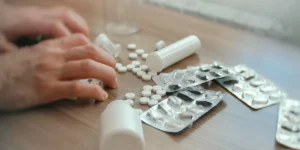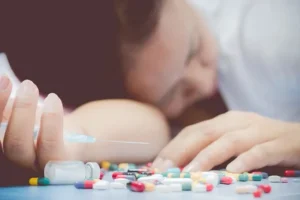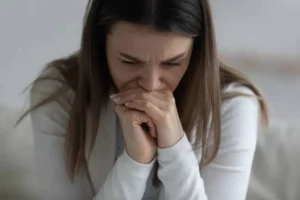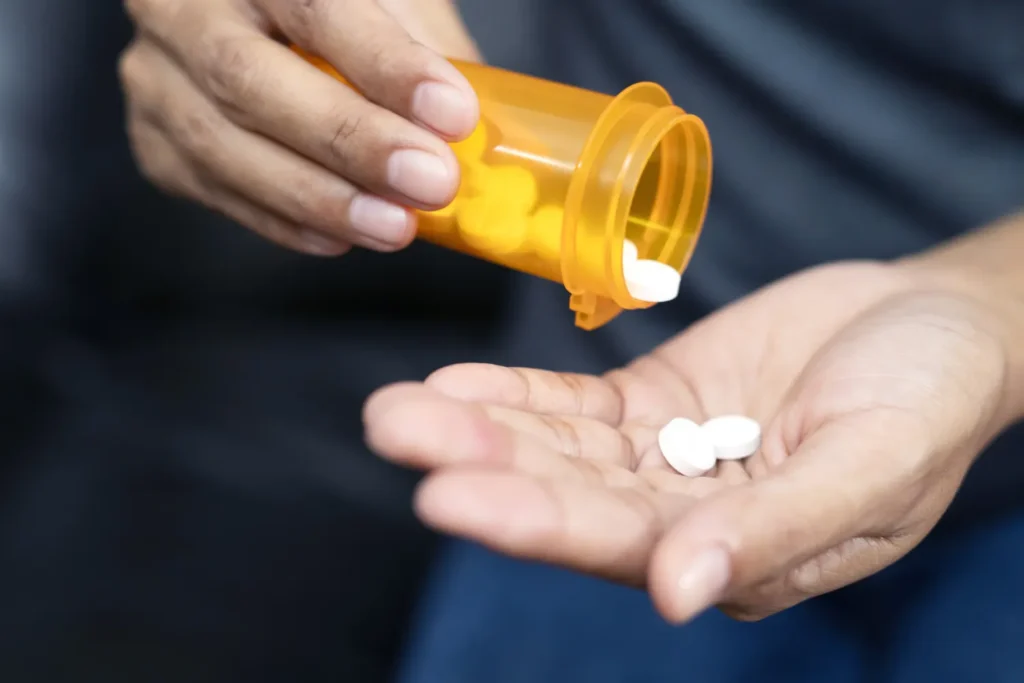Have you or someone you know been struggling with the grip of opioids? Opioid Use Disorder (OUD) is a complex condition that goes beyond physical dependency, deeply affecting lives and communities across the globe. It’s not just about the need for the substance; it’s about the entire life upheaval that comes with it.
In this blog, we’ll dive deep into what Opioid Use Disorder really is, from the warning signs that signal its onset to the profound impact it has on individuals and society. We’ll explore how it develops, what makes it so challenging to overcome, and most importantly, the various effective treatments that can lead to successful recovery.
Contents
Understanding Opioid Use Disorder (OUD)
OUD is classified as a medical condition that results from the use of opioids, including prescription pain relievers, heroin, and synthetic opioids such as fentanyl. It is characterized by a compulsive urge to use opioid drugs, even when they are no longer medically required.
Remember, OUD is more than just a habit or dependency; it’s a chronic disorder that can cause major disruptions in health and daily life.
Signs and Symptoms of Opioid Use Disorder
 Identifying Opioid Use Disorder (OUD) early can significantly improve the effectiveness of treatment. Here are the key physical, behavioral, and psychological signs that might indicate someone is suffering from OUD:
Identifying Opioid Use Disorder (OUD) early can significantly improve the effectiveness of treatment. Here are the key physical, behavioral, and psychological signs that might indicate someone is suffering from OUD:
Physical Signs:
- Needing more of the opioid to achieve the same effect.
- Experiencing symptoms such as nausea, muscle aching, fever, diarrhea, and vomiting when not using the drug.
- Neglect of personal grooming, unexplained weight loss, and frequent flu-like symptoms.
Behavioral Signs:
- Using opioids more often or in larger amounts than intended.
- Lying about the amount used, or being secretive about activities.
- Failing to fulfill obligations at work, school, or home due to opioid use.
- Continuing to use opioids despite knowing the problems.
Psychological Signs:
- Strong desire or urge to use opioids.
- Significant shifts in mood, from elation to hostility or depression.
- Loss of interest in activities once enjoyed or withdrawal from social activities.
- Increased anxiety, paranoia, or irritability that wasn’t previously characteristic.
Recognizing these signs is the first step in seeking help or supporting someone else to get the treatment they need. OUD is a complex disorder, but with the right approach, recovery is achievable.
The Impact on Individuals and Society
 Opioid Use Disorder (OUD) carries profound consequences not only for the individual but also for their families and society at large. Here’s an overview of these effects:
Opioid Use Disorder (OUD) carries profound consequences not only for the individual but also for their families and society at large. Here’s an overview of these effects:
Impact on Individual Health:
- Physical Health: respiratory depression, gastrointestinal issues, and increased risk of infectious diseases.
- Mental Health: depression, anxiety, and increased risk of suicide.
Family Dynamics:
- Relationship Strain: severely strain relationships with partners, children, and other family members, leading to marital discord and familial dysfunction.
- Financial Stress: The costs associated with procuring opioids, coupled with potential job loss due to impairment, can lead to significant financial strain on families.
- Caregiver Burden: Family members may become caregivers to someone with OUD, often at a cost to their own health and well-being.
Societal Costs:
- Healthcare Burden: OUD contributes to healthcare costs due to increased emergency room visits, hospitalizations, and the need for long-term treatment strategies.
- Workforce Impact: Loss of productivity, absenteeism, and reduced employment opportunities for individuals with OUD impact the broader economy.
- Public Safety and Crime: There is an increased risk of criminal behavior linked to opioid use, as individuals may engage in illegal activities to fund their drug use. This aspect also stresses law enforcement and legal systems.
Risk Factors for Developing Opioid Use Disorder
 Understanding the risk factors for Opioid Use Disorder (OUD) can help in preventing its onset and guiding early intervention strategies. OUD doesn’t occur in isolation; it often results from a combination of genetic, environmental, and personal factors. Here’s a breakdown of these risk factors:
Understanding the risk factors for Opioid Use Disorder (OUD) can help in preventing its onset and guiding early intervention strategies. OUD doesn’t occur in isolation; it often results from a combination of genetic, environmental, and personal factors. Here’s a breakdown of these risk factors:
Genetic Predisposition:
- Family History
- Genetic Makeup
Environmental Influences:
- Accessibility
- Peer and Social Networks
- Socioeconomic Factors
Prior Substance Abuse:
- History of Substance Use
- Early Exposure
Psychological Factors:
- Mental Health Disorders.
- Stress and Trauma
Medical History:
- Chronic Pain
- Previous Prescriptions
By identifying these risk factors, healthcare providers and individuals can work together to develop targeted prevention and treatment strategies that address the specific needs and vulnerabilities of at-risk populations.
Prevention Strategies for Opioid Use Disorder
Preventing Opioid Use Disorder (OUD) is crucial, and there are several proactive steps you can take to protect yourself and your community. Here’s a straightforward list of actions that can make a big difference:
- Educate Yourself and others about the risks associated with opioids
- If you’re prescribed opioids, follow your doctor’s instructions carefully.
- Discuss non-opioid options for pain management with your healthcare provider.
- Participate in or promote public health campaigns in your community that focus on the dangers of opioid misuse.
- If you or someone you know is struggling with substance use, look for local support groups or rehabilitation programs.
- Engage with workplace programs (such as EAPs) that educate employees about opioids and provide support for those who might be struggling with addiction.
Taking these steps can help build a safer environment for everyone, reducing the risk of OUD and supporting those who may be facing challenges with substance use.
Treatment Options for Opioid Use Disorder

Effective treatment for Opioid Use Disorder (OUD) involves a combination of medication-assisted treatment (MAT), behavioral therapies, and integrated care approaches. Here’s an overview of the most effective modalities:
Medication-Assisted Treatment (MAT):
- Buprenorphine: This medication reduces cravings and withdrawal symptoms without producing the high associated with opioids.
- Methadone: Administered in a clinic setting, methadone is a long-acting opioid that helps reduce cravings and withdrawal symptoms, allowing individuals to function normally without the highs and lows of opioid abuse.
- Naltrexone: Available as a pill or a monthly injection (Vivitrol), naltrexone blocks the effects of opioids at the receptor level, which helps prevent relapse. It is best used after fully detoxing from opioids.
Behavioral Therapies:
- Cognitive Behavioral Therapy (CBT): This therapy helps patients recognize and change maladaptive behaviors and thought patterns that lead to substance use, and develop skills to handle different life stressors healthily.
- Contingency Management: Utilizes a voucher-based system where patients earn “points” based on negative drug tests, which they can exchange for items that encourage healthy living.
- Motivational Interviewing: A patient-centered counseling style that addresses ambivalence to change and enhances motivation towards recovery.
Aftercare and Recovery Support:
- Ongoing Counseling: Continuation of behavioral therapies to help maintain sobriety.
- Support Groups: Engagement in groups like Narcotics Anonymous (NA) or SMART Recovery that provide community support and accountability.
- Relapse Prevention Education: Teaching patients strategies to identify and manage triggers and high-risk situations that could lead to relapse.
These treatment options, when combined, offer a comprehensive approach to managing OUD, emphasizing the importance of treating both the physiological aspects of addiction and its psychological underpinnings.
Conclusion
Struggling with Opioid Use Disorder (OUD) or any other addiction? QuitMantra is here to help. Visit us to book your trial therapy session or join our deaddiction program. Take the first step towards a healthier future today.
